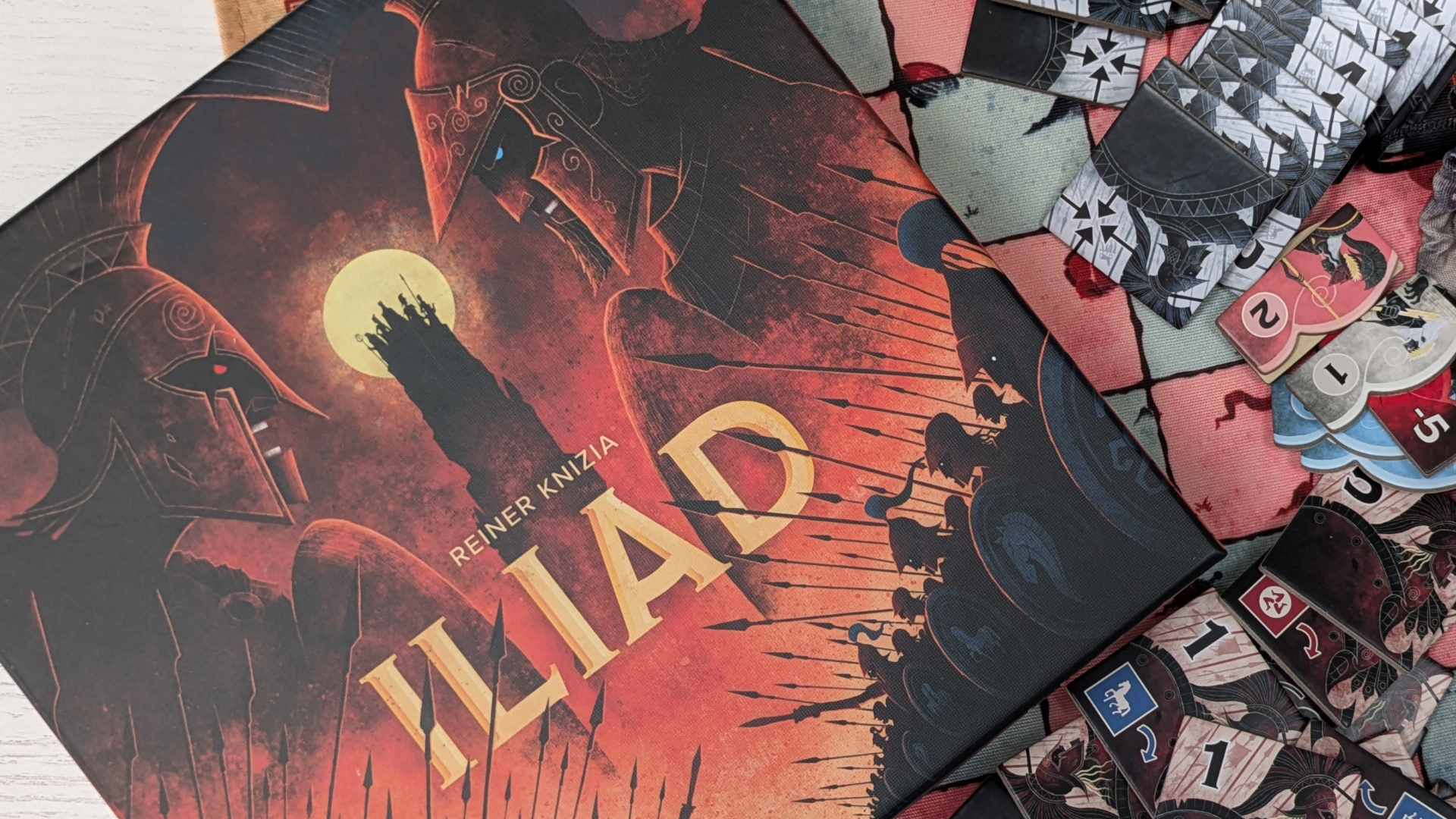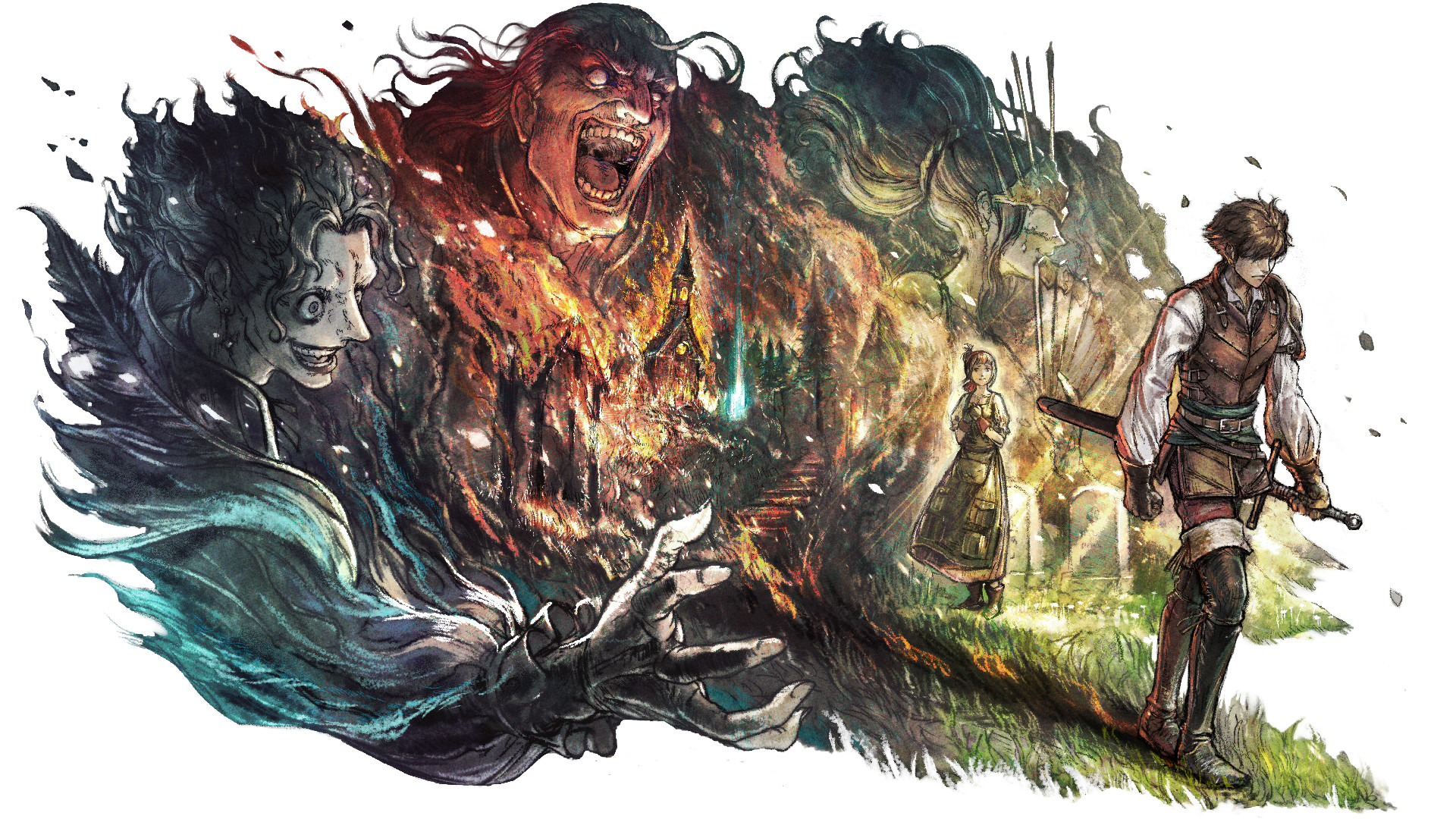GamesRadar+ Verdict
Iliad is a fast, fun, and challenging tactical abstract, but it doesn’t have quite enough moving parts to sustain long-term interest.
Pros
- +
Easy to learn, but with a surprising amount of nuance once you get stuck in
- +
Has a great balance of excitement and tactical heft
- +
Evocative and thematically engaging art and visual structure
Cons
- -
Lacks the variety or depth to make it a genuine classic
- -
Cardboard playing tiles will likely wear very quickly and the cloth board is flimsy
Why you can trust GamesRadar+
Reiner Knizia designs board games with the same frequency that most people play them; he’s almost certainly the most prolific creator of games ever. Often, he does this by riffing hard on previous hits to put out something new, but Iliad, based loosely on Homer’s Greek epic of the same name, is a completely fresh design for him, with no obvious thematic or mechanical links to his main body of work. He’s also responsible for some stone-cold classics, among the best board games ever designed, so: is his newest offering fit to join them, or is it as forgettable as the King of Troy?
Iliad features & design
Price | $59.99 / £49.99 |
Ages | 8+ |
Game type | Abstract/strategy |
Players | 2 |
Lasts | 30mins |
Complexity | Low |
Designers | Reiner Knizia |
Publisher | Bitewing Games |
Play if you enjoy | Splendor, 7 Wonders, Azul |
- Small, lightweight game that’s easy to transport
- Components are pleasingly tactile, but don’t wear well
- Artwork tells surprisingly rich story, even if gameplay doesn’t
Iliad is a small box game, and that means small box contents. However, there’s a lot to enjoy about them, and the game is extremely portable.
Instead of a standard board there’s a fold-out cloth marked with a grid, onto which you place chunky tiles punched out of a sprue. While the cloth doesn’t lie entirely flat, the tiles are heavy enough for this not to be a problem. There are also a number of small scoring tiles which you must also punch out and mix up in the included drawstring bag. While robust, all these tiles will see a lot of handling, and the printed edges start to wear very quickly.
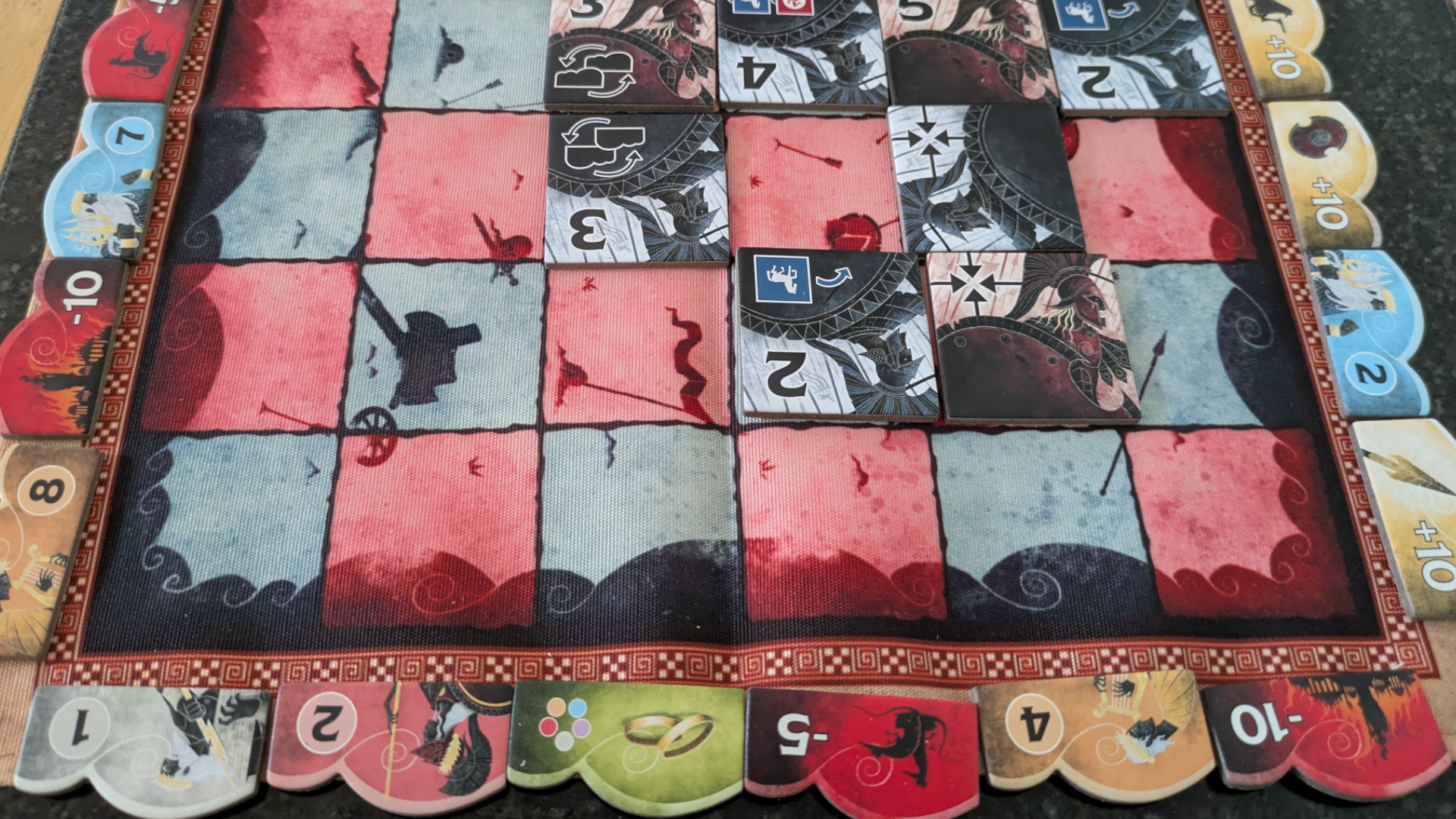
The art style is very striking. The board depicts a battlefield, littered with the bleak debris of bronze-age warfare. The tiles for each side all bear the same dark-toned illustration of a crest-helmed, grim-faced Greek warrior, in different colours to mark them apart. The box lid, likewise, shows two such soldiers, grimacing furiously at each other over a rocky outcrop. The scoring tiles, meanwhile, have a mixture of art but many of them carry the faces of Greek gods in a much brighter, carefree style.
What are we to make of this? The game itself is about laying out lines of troops, an echo of the phalanx warfare of the era, where ranks of men would clash and push against each other with shield and spear. It was a man’s world, and the only woman in the game, Helen of Troy, is relegated to a pair of green ring tokens. The focus is on men, depicted as angry and alone, even as they jostle together for the grisly work of butchering each other for the distant goals of uncaring noblemen and disinterested gods. So, although the tile-laying gameplay feels abstract, there’s a surprising amount of thematic detail regarding the Trojan war in the game’s visuals. It’s quite the lesson in using limited art space to convey a complex message.
Gameplay
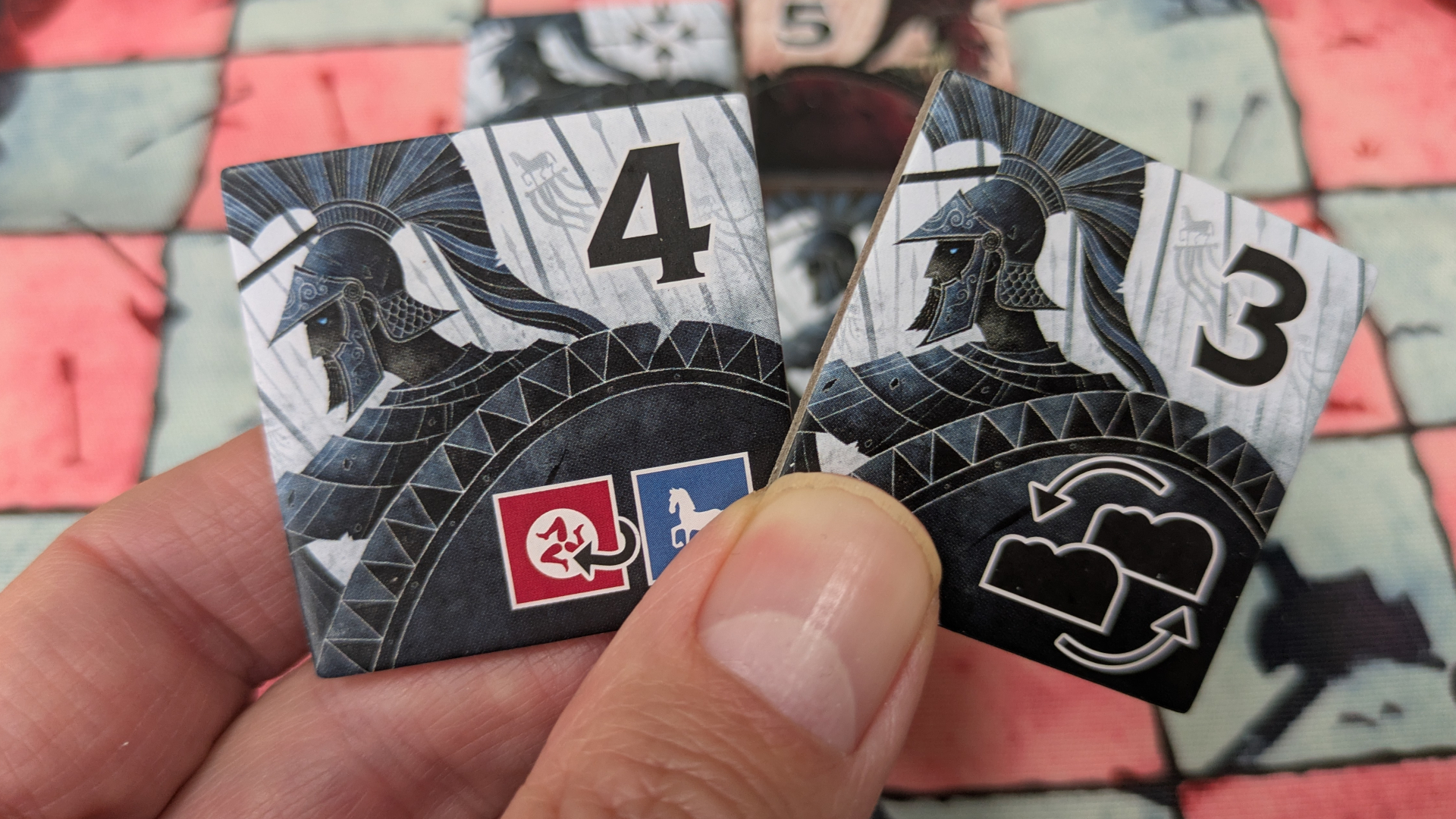
- Players alternate placing tiles to get the highest value
- Most tiles have a special ability which adds tactical nuance
- Not quite enough variety to become addictive
Turn-by-turn play in Iliad is straightforward. On your turn you'll choose a numbered tile and play it onto the grid, with tiles of each side alternating. If you complete a row or column then you tot up the value of tiles for each player, and whoever scores highest gets first pick from the scoring tokens at each end of the line.
Naturally, there are wrinkles to make the formula more interesting. The one to four-value tiles all have a special power. Some let you move tiles already on the board, for example, while three-value tiles let you swap a scoring token you’ve won for another set aside after set-up. Then there’s a sixth tile type, the "dolos" tile (Greek for "deceit”), which has the value of both adjacent tiles in its scoring line.
Weekly digests, tales from the communities you love, and more
As is often the case with Reiner Knizia games, these scoring rules are more complex than actual gameplay, although only marginally so in this instance. Your first order of business is to ensure you either get a scoring tile from each of the five gods, or four gods plus both green ring tiles, standing in for marriage to the legendary beauty Helen of Troy. If one player achieves this and the other doesn’t, that player wins, regardless of the scores. If both, or neither, players get the full set then you tot up the values on the scoring tokens, which can include negative numbers. Whoever has the highest total wins.
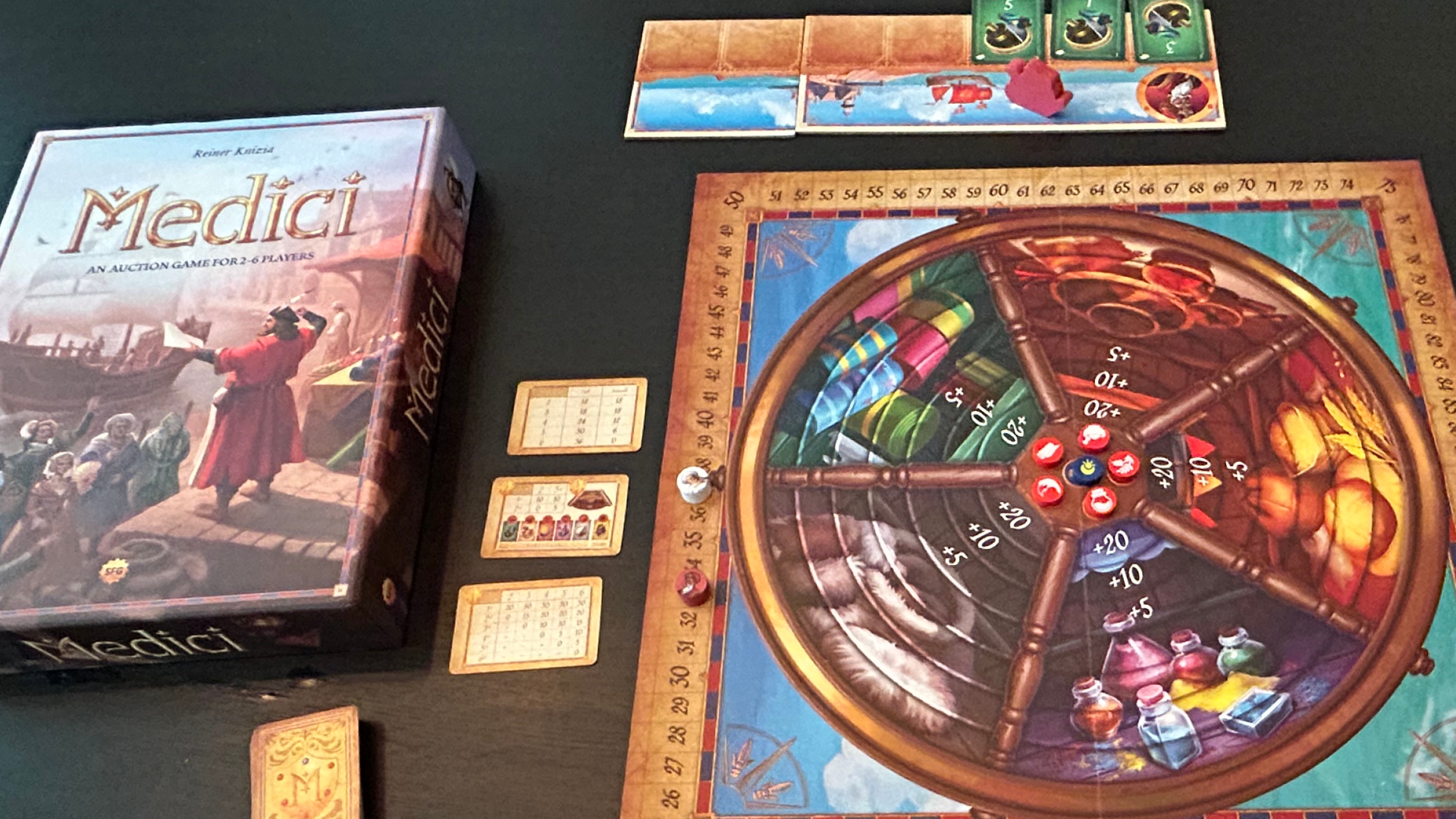
Reiner Knizia is very well regarded in the tabletop community; he's won numerous awards and has dozens of games to his name, including beloved classic Medici. His design credits stretch back to the early 1990s.
Those are pretty much the entire rules of Iliad. Initially, it’s the kind of game that you feel your way through rather than thinking about too much. The mechanics are all hard numbers; there’s no randomness here other than the draw of tiles. That engenders a degree of respect, a sense that this is going to be hard work, like Chess in miniature, so your first steps into the Trojan war will be tentative as you try to figure out what to do.
Further plays begin to peel off new layers of nuance with every move, like some kind of cardboard striptease. You begin to realize that certain tiles are best played early, and others late. You start to strategize for contesting both the column and the row with your placements. You spot how you can sometimes close games out by picking low-value tiles if it denies your opponent a chance to get a full set of gods. There’s a whole world of consideration about leaving the last space in a row or column open to your opponent, who will then win a scoring tie based on having placed the final tile. Like the best Knizia designs, there’s a lot lurking under a simple facade.
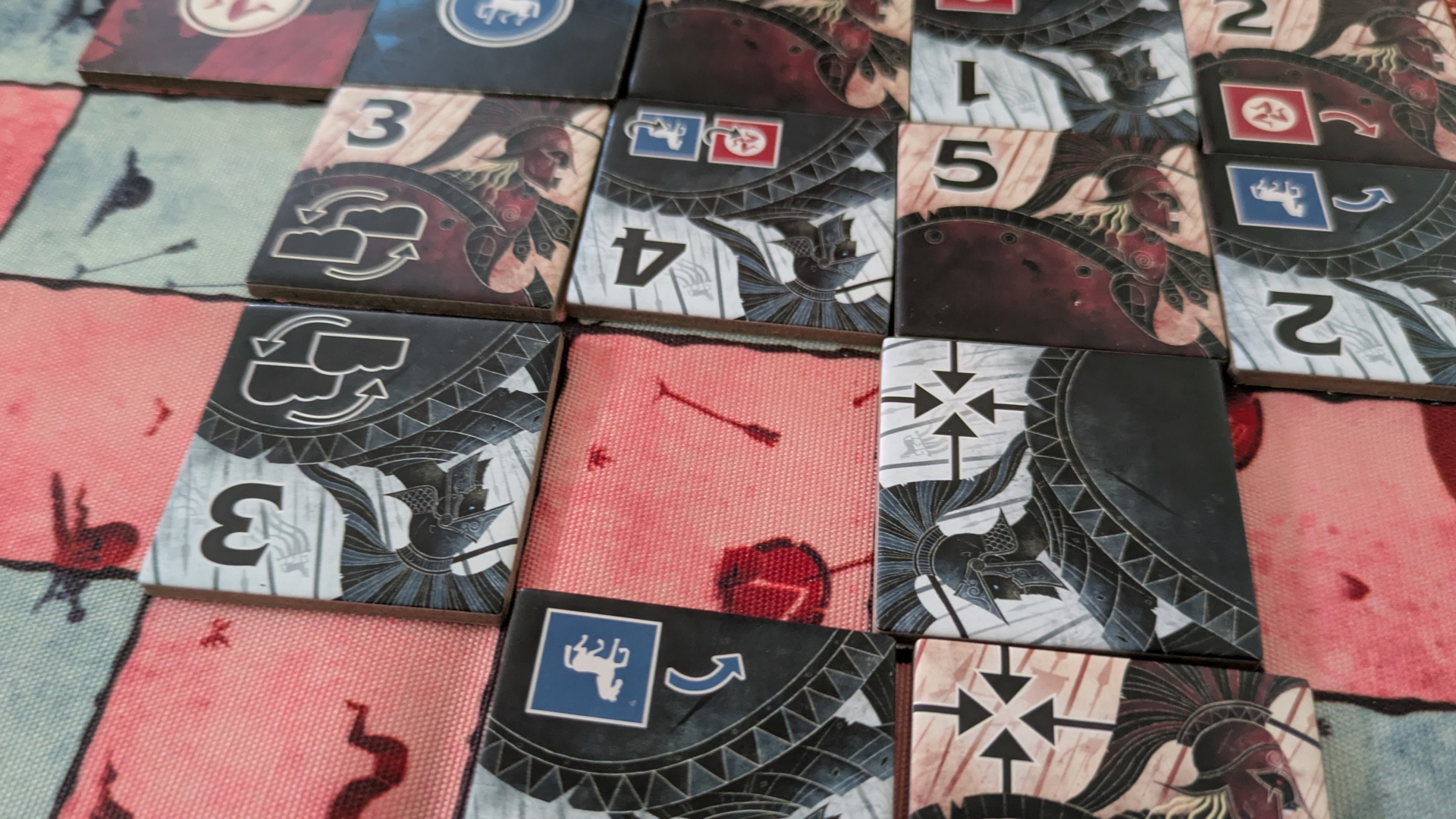
What’s eventually revealed, however, is that this isn’t the richly strategic game it first appears to be; it's a richly tactical one. Some of the potential plays, particularly those where you get to move tiles around, can result in huge game state swings, and represent yet another minor galaxy of tactical subtleties to consider. And because of the way the board fills up, the last few tiles you put down will capture the majority of your scoring chits. What you draw, and what your opponent has at their disposal, can make a colossal difference. Planning ahead won’t help you much in Iliad as a result, but you do need to become a master of reading the game state at any given point, and making the best placement choice between the tiles you’re holding.
Because Iliad is short, this focus on tactics and late play isn’t really much of an issue. If you made bad decisions or got a bad draw, you just re-rack and go again, hoping to put what you’ve learned into practice. This should be the recipe for a highly addictive game, but Iliad falls a little flat in that regard. There’s just not enough variety in the game’s recipe of tile types on a tight grid for it to get its claws into the players, leaving repeat plays feeling like repeat meals of toast with different toppings.
Should you buy Iliad?
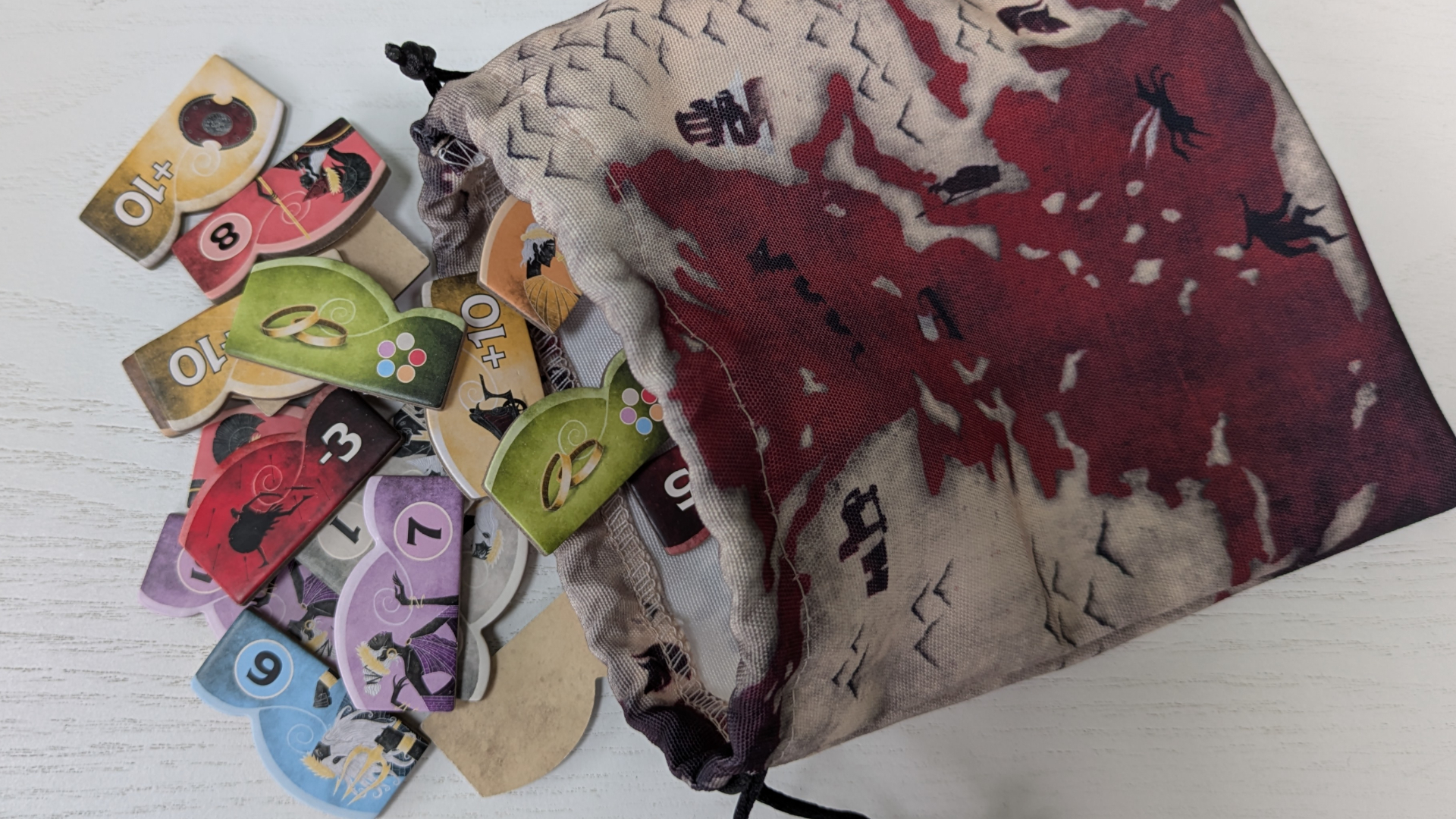
Although it might not have the longest shelf-life in your collection, it’s hard to imagine there are many stripes of gamers who won’t enjoy their time with Iliad. While initially daunting, it turns out to be a fairly accessible game that’s easy to learn and straightforward to play, while still benefitting players with experience and consideration. Its tactical back and forth is engaging, rewards skill, and successfully builds tension towards the game end.
Ratings
Criteria | Notes | Score |
|---|---|---|
Game mechanics | Although simple to learn and fast to play, Iliad reveals a surprising amount of tactical depth when you get stuck in. | 4/5 |
Accessibility | The game is lightweight and cheap, easy to teach, and has playing pieces in two clear primary colors. | 4/5 |
Replayability | While the game is initially very engaging, it lacks the variety and addictive qualities to sustain long-term interest. | 3/5 |
Setup and pack-down | The size of this game and its limited components make it easy to handle. | 4/5 |
Component quality | The art tells an interesting story, but the cloth board is annoying and the tiles wear very quickly. | 3/5 |
Buy it if...
✅ You want a top-drawer, two-player filler
Fast, two-player games don’t come much better than this. Iliad is perfect as a quick appetizer.
✅ You’re a Knizia fan
Reiner Knizia’s design chops and prolific hit rate have earned him a loyal fanbase and, while it can’t compete with his true classics, this is definitely one you need to pick up if you’re a devotee.
Don't buy it if...
❌ You maintain a small collection of deep, highly replayable games
Some gamers thrive on the seemingly infinite replay value and long learning curve of strategic games. If that’s you, Iliad is too tactical and samey and would waste your shelf space.
❌ Your want party games
For many people the word "game" conjures up thrills, spills, and mopping up the mess afterwards. Although Iliad is a very accessible game, it’s too dry for this crowd.
How we tested Iliad
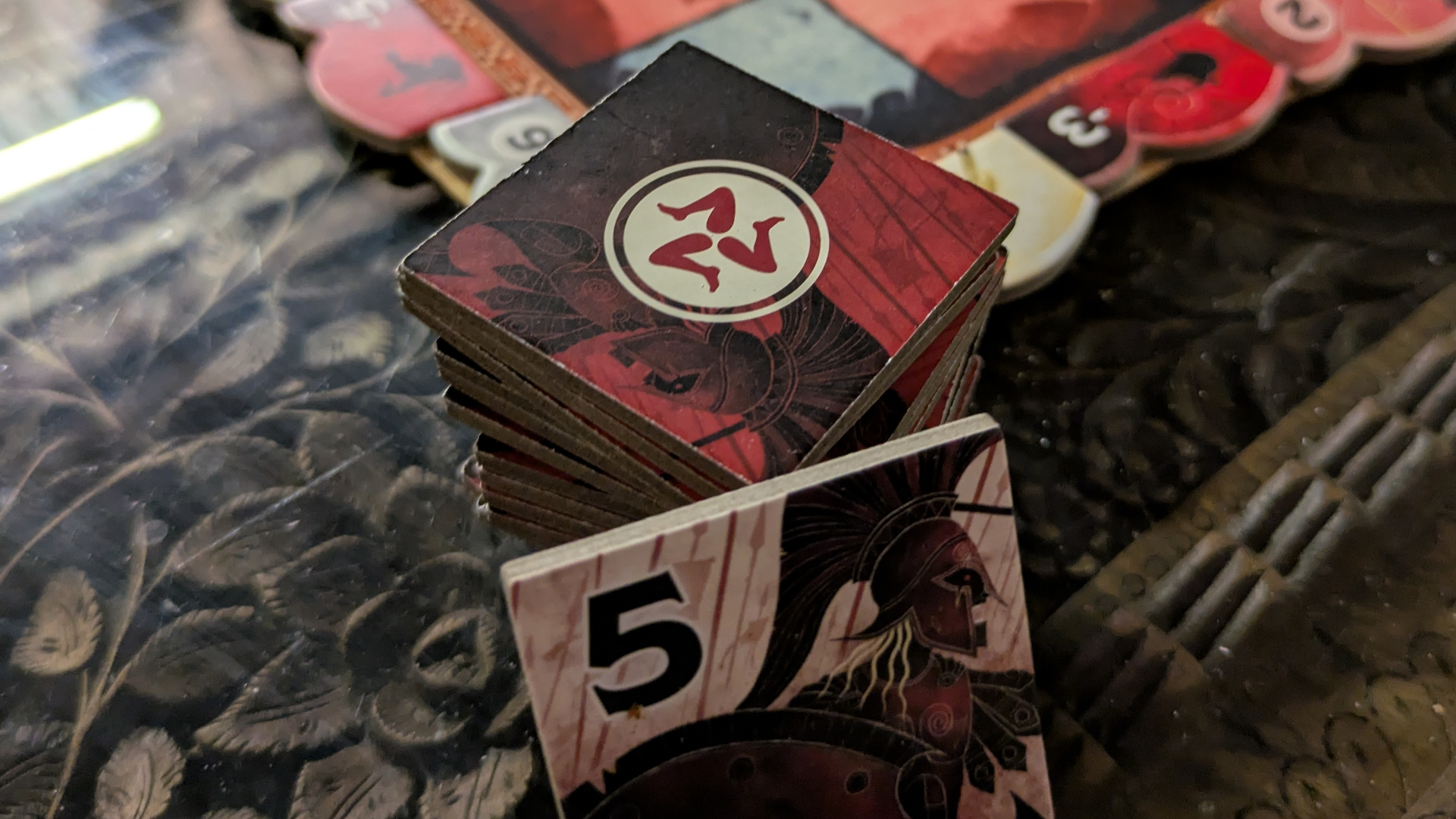
This review was conducted using a sample provided by the publisher.
As with all our reviews, we tested Iliad with hands-on sessions to get the best sense of its mechanics, longevity, and rules. Our reviewer also used their years of experience covering the industry to compare this product with previous work from the same designer.
For more, be sure to check our guide to how we test board games or the full GamesRadar+ reviews policy.
Want to try something else? Be sure to drop in on the best family board games or the best adult board games.

Matt is a freelance writer specialising in board games and tabletop. With over a decade of reviews under his belt, he has racked up credits including IGN, Dicebreaker, T3, and The Guardian.
You must confirm your public display name before commenting
Please logout and then login again, you will then be prompted to enter your display name.
